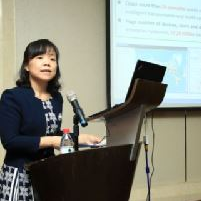Symmetry in Quantum Optics and Quantum Information Research
A special issue of Symmetry (ISSN 2073-8994). This special issue belongs to the section "Physics".
Deadline for manuscript submissions: 31 December 2024 | Viewed by 2689
Special Issue Editors
Interests: quantum optics; quantum information technology; magnetometer; quantum time-frequency transfer; quantum key distribution; quantum open system
Interests: quantum key distribution; quantum random number generation; quantum information theory
Special Issues, Collections and Topics in MDPI journals
Interests: quantum information; quantum cryptography; quantum key distribution; quantum random number generator; quantum network
Interests: quantum cryptography; quantum key distribution; discrete variable; information processing
Special Issues, Collections and Topics in MDPI journals
Special Issue Information
Dear Colleagues,
Quantum measurement has the advantages of high accuracy, high sensitivity, wide response range, and easy integration, which will break the classical measurement limit. Quantum precision measurement and related quantum information technology improve the methods of information acquisition and transmission, providing potentials for experiments and applications with high precision, and open a pathway for large-scale and high-performance quantum networks.
In recent years, technologies, including atomic magnetometer, atomic clock, optical frequency comb, Rydberg atom, and quantum weak measurement, have greatly enriched high-precision measurement methods. Meanwhile, fields including quantum key distribution, quantum time–frequency transfer, and quantum ranging have enhanced information transmission. These studies not only bring excellent technical performances but also drive the development of next-generation metrological technologies. In fact, a lot of symmetries exist in quantum technologies.
This Special Issue aims to serve as a platform for the presentation of new and improved techniques of quantum precision measurement and related quantum information technology, as well as the symmetric properties of these fields. In particular, the theoretical or experimental investigation and improvement of quantum information technology and other extended topics fall within the scope of this Special Issue.
Prof. Dr. Hong Guo
Dr. Ziyang Chen
Dr. Xiangyu Wang
Prof. Dr. Qiong Li
Dr. Bingjie Xu
Guest Editors
Manuscript Submission Information
Manuscripts should be submitted online at www.mdpi.com by registering and logging in to this website. Once you are registered, click here to go to the submission form. Manuscripts can be submitted until the deadline. All submissions that pass pre-check are peer-reviewed. Accepted papers will be published continuously in the journal (as soon as accepted) and will be listed together on the special issue website. Research articles, review articles as well as short communications are invited. For planned papers, a title and short abstract (about 100 words) can be sent to the Editorial Office for announcement on this website.
Submitted manuscripts should not have been published previously, nor be under consideration for publication elsewhere (except conference proceedings papers). All manuscripts are thoroughly refereed through a single-blind peer-review process. A guide for authors and other relevant information for submission of manuscripts is available on the Instructions for Authors page. Symmetry is an international peer-reviewed open access monthly journal published by MDPI.
Please visit the Instructions for Authors page before submitting a manuscript. The Article Processing Charge (APC) for publication in this open access journal is 2400 CHF (Swiss Francs). Submitted papers should be well formatted and use good English. Authors may use MDPI's English editing service prior to publication or during author revisions.
Keywords
- atomic magnetometer
- quantum time–frequency transfer
- quantum key distribution
- quantum open system
- atomic clock
- optical frequency comb
- Rydberg atom
- quantum weak measurement
- quantum image
- quantum information
Benefits of Publishing in a Special Issue
- Ease of navigation: Grouping papers by topic helps scholars navigate broad scope journals more efficiently.
- Greater discoverability: Special Issues support the reach and impact of scientific research. Articles in Special Issues are more discoverable and cited more frequently.
- Expansion of research network: Special Issues facilitate connections among authors, fostering scientific collaborations.
- External promotion: Articles in Special Issues are often promoted through the journal's social media, increasing their visibility.
- e-Book format: Special Issues with more than 10 articles can be published as dedicated e-books, ensuring wide and rapid dissemination.
Further information on MDPI's Special Issue polices can be found here.






